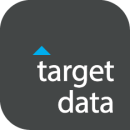Every tech company worth its salt has a robust data team, but what do the people on those teams actually do all day, and how does that work push their businesses forward? We reached out to eight Chicago data teams to find out.

Children’s fashion may not be the first thing that comes to mind when you think about data analytics, but for curated shopping service Mac & Mia, crunching the numbers is key to a satisfying customer experience. To Director of Business Analytics Haley Kwait, the opportunity to build a data-centric culture from scratch is one of the best parts of working for the early-stage company.
What data projects are you currently working on?
One of the data projects we are currently working on is dissecting our customer base in order to find purchase behavior patterns and trends. Since we're still an early-stage company, we're definitely focused on new customer acquisition, but we also want to ensure we have the right retention strategy in place. With families having multiple children spanning across different ages, styles, and so on, we want to create a personalized experience through data analytics.
Another data project we are working on is using data analytics to uncover trends around our sales team productivity. For example, we've started analyzing what the optimal box composition should look like based on a specific customer's need state. We have been working closely with our sales team to test and learn what our recommendation engine should like in the future.
What kind of impact do you see from the work you are doing?
One of the best parts about working at an early-stage company is how quickly you can see the impact from your ideas! As mentioned above, we've been working to test out different box compositions that are supported through data analysis. About a month ago we had one big idea that our stylists started adopting, and we were able to see a significant improvement in our KPIs in a matter of weeks. It's been awesome to see these changes happen so quickly right before our eyes.
What is the best part of doing data analytics for Mac & Mia?
I think the coolest part of data analytics at Mac & Mia is getting to work so closely with our amazing functional teams! Since we're still relatively small, we get to work cross-functionally across the finance, operations, marketing, merchandising, sales and technology teams to quantify and assist with new initiatives through a data analytical lens. We're excited to be building a data-centric culture by getting everyone at the company excited about data and using it to problem-solve and influence the decisions that will drive Mac & Mia's growth!

Born out of the data operation behind Barack Obama’s 2012 reelection campaign, Civis Analytics uses data science to help public and private sector organizations understand their data — and how best to act on it. For Staff Data Scientist Ali Vanderveld, the opportunity to stay at the cutting edge of data science while helping organizations that work for the public good are a big part of what makes Civis special.
What data projects are you currently working on?
Most recently, I have been working on two projects that are on different ends of the data science spectrum. The first is to model customer behavior using recurrent neural networks. These models are particularly well-suited for time series analysis. The second project involves our data assets. As we continue to streamline our data engineering processes, quality control at every step of the way is a must. To that end I am working on advanced, automated data set anomaly detection.
What kind of impact do you see from the work you are doing?
At Civis, we are enforcing strict data quality standards and enlisting state-of-the-art modeling techniques so that our clients and software customers are getting the most accurate insights possible. These insights range from understanding brand awareness for for-profit clients, to finding new potential donors for charities and optimizing voter outreach. In particular, I take great pride that a large portion of our client portfolio is in the government and nonprofit sectors, and that we actively look for opportunities to work within the "social good" space.
What is the best part of being a data scientist at Civis?
The coolest part for me is the culture of innovation that we have here. Some data science jobs involve doing the same thing over and over again, but here at Civis we've automated such tasks with our data science platform. That means that we can spend our time doing the fun stuff, trying out new technologies and staying at the forefront of what is possible with data. And it definitely doesn't hurt that this is the smartest group of people I've ever worked with.

Target Data helps companies unlock the insights hiding within their customer data and boost their bottom lines. The company’s analytics team is constantly looking for new ways to get insights from customer data, which generates opportunities to learn about how analytics can be applied to a range of different industries.
What data projects are you currently working on?
Jessica Angelotta, director, business analytics and data science: Current project work includes attribution modeling; recency, frequency and monetary analysis; and building business intelligence dashboards to provide real-time KPI tracking. Our larger team is working together on automating data processes, which allows us to focus on finding actionable insights from our data analysis.
Sean Livelsberger, director, business analytics and data science: I am primarily working on enhancing Target Data's core offering. I’m always looking to compare different data science methodologies and means to raise the level of insight that we can derive. I’m also working to optimize our strategic approach to ensure consistency and quickness in delivery.
What kind of impact do you see from the work you are doing?
JA: Much of the modeling work we do drives the targeting of our clients’ addressable media campaigns. Since we use data at the household level, our analytics allow us to optimize a campaign to each best prospect. This helps our clients get the most out of their marketing spend.
SL: At an organizational level, our work is essential to delivering high-quality marketing insights and strategic recommendations to our clients. One of the biggest impacts that I see coming from my work is the increasing speed at which we are able to produce solutions and insights for our clients.
What is the coolest part of being a data analyst at Target Data?
JA: The fact that we are so focused on predictive analytics, which is at the core of our addressable marketing offering. I also really love our new office space!
SL: Essential to Target Data's philosophy is an adherence to a consistent approach with the ability to effectively adapt to the paradigms of a diverse set of verticals. Naturally, this has led to our organization working with a diverse set of clients, ranging from traditional retail to luxury fashion outlets and professional sports teams. From an analyst's perspective, this scenario is an incredibly valuable experience in consistently being challenged to adapt the use and understanding of an underlying analytical framework.

A data-driven platform for managing social marketing campaigns, Strike Social puts data science at the core of everything it does. For Data Scientist Jeongku Lim, building tools that immediately help boost the bottom line is one of the most rewarding parts of the job.
What data projects are you currently working on?
I am developing a prediction model for Strike Social. This budget and performance predictor will answer a number of questions that frequently come up when media buyers are planning their paid social and YouTube ad campaigns, such as, “How much budget do we need to achieve a certain performance?”
Based on the precise analysis of historical data, I am testing and applying various machine learning algorithms to categorize and classify data points with similar characteristics. By programming prototype tools, I help other teams at Strike Social build actual campaign plans for our clients. This approach not only helps us better predict the different needs of each client, but it also gives me real-world feedback. In return, I am able to keep improving our prediction models and tools.
What kind of impact do you see from the work you are doing?
Strike Social uses the prototype tool that I have developed to consult with clients and answer questions that arise while planning campaigns. It’s difficult to access and manipulate data sets every time a media buyer needs new insights for certain campaign conditions. But the prototype tool is easy to use and provides immediate predictions. In fact, it has helped us win a lot of new business. This level of consultation is what makes Strike Social unique, and I’m very happy to see how my work is actually affecting our business’ bottom line.
What is the best part of being a data scientist at Strike Social?
Every day, I feel like I am growing, and it’s really inspiring to see our different teams working together to create new solutions. Everyone at Strike Social shares knowledge and collaborates well together on projects, which, in turn, increases the capabilities of our company as a whole. Through my work here, I can develop my skill set, broaden my vision and learn how to manage and organize teams better. My work makes me very happy, and it motivates me to keep solving difficult problems.

Avant is known for using data science to assess the creditworthiness of potential borrowers who don’t quality for traditional bank loans. But credit assessment is only part of what data scientists at Avant spend their time on. To data scientists Nils Carlsson and Christian Tillich, the opportunities to learn about and shape every facet of the business is one of the best parts of working for the fast-growing lender.
What data projects are you currently working on?
Nils Carlsson: I am currently working on two main projects: our direct-mail response model and our income prediction model. The direct-mail response model is cool because I get to predict who will respond to letter offers, which we send out pretty frequently; this means that I get to see the results of my work sooner rather than later!
Christian Tillich: Currently, I'm finishing up a project to help correct for selection bias in specific segments of our customer base. Selection bias is an important problem to solve for, as it can have a tendency to mess with your conclusions if you don't correct for it.
What kind of impact do you see from the work you are doing?
NC: Avant decided to make letter-offers a full-time priority for my core team shortly before I started. It had previously been a side project. We've had some noticeable success since the formation of our mail squad, resulting in better targeting of potential customers and ultimately more loans offered.
CT: My last project took a high-level view of the portfolio and tried to predict what was going to happen when installment payments came due. It was probably the farthest we'd ever tried to predict out, and it was a paradigm shift for the company, away from shorter-term metrics, or abstract metrics or rankings that didn't necessarily tell you what was happening with the customer. It was really cool watching people adopt our language and think about risk in a way that I helped develop.
What is the best part of being a data scientist at Avant?
NC: The attitude towards continual learning. Every week, we have a lunch-and-learn session where someone from the risk division presents on what they have been working on recently, so we get exposure to different aspects of the company. It’s a great way to get plugged into what's happening around the office, and it encourages collaboration between different divisions.
CT: Probably the tools we have available to us. Back in physics research, and at previous jobs, I got very, very used to doing things from scratch. I've built more than one linear model by coding macros in Excel, I'll admit. And while it's good to be capable of that, it's a lot more fun to sit on top of an infrastructure that pulls and prepares your data for you, and reduces model building to a script maybe 20 lines long. It gives you a lot more room to think about the problem, try new stuff, and evaluate the results more quickly.

Led by Chicago serial entrepreneur Sam Yagan, ShopRunner is a membership service that provides deals and free two-day shipping and returns from more than 140 retailers. To Senior Director of Data Science Michelangelo D'Agostino, a network-wide view of browsing and purchase data provides an interesting opportunity to understand and optimize for consumer behavior.
What data projects are you currently working on?
At ShopRunner, we often think of our service as Amazon Prime for everyone else. We have access to a truly large-scale dataset of granular, product-level browsing and purchase data across this network of retailers. Currently, we’re starting to use this data for personalization and recommendations — using our cross-retailer view to make smarter decisions on which retailers and products to recommend. We also recently introduced a Chrome extension that matches out-of-network products to the same products at ShopRunner retailers. We’re helping to improve that matching algorithm. Longer term, there’s plenty of opportunity for interesting natural language processing and computer vision projects on the millions of product descriptions and images in our catalog.
What kind of impact do you see from the work you are doing?
As a data science team, we have a huge amount of leverage to impact our business. Our retailers know that they need access to this cross-retailer, unified view of the consumer to create more personalized, relevant shopping experiences. But they struggle with both the raw data and the technical capacity to implement machine learning models. As data scientists at ShopRunner, we have the opportunity to really take the company to the next level by helping our retailers compete in an ever-changing and increasingly competitive e-commerce landscape.
What is the best part of being a data scientist at ShopRunner?
The best part of being a data scientist at ShopRunner is the close working relationship we have with our application engineers and our data engineers. It’s an open, collaborative relationship that really helps us get things done and remove blockers. And when that doesn’t work, we can always just go into the AWS console and fire up whatever resources we need to get a job done.

An online marketplace for unused gift cards, Raise uses data analytics to adjust its tech products based on customer behavior. Because gift cards from Raise are used across a number of retail verticals, the startup’s data team has access to a uniquely holistic view of customer behavior. But to Jay Hakim and the engineers on his data team, one of the best parts of the job is working closely with every department within the company.
What data projects are you currently working on?
The pipeline for data projects is really exciting at Raise. One of the most interesting and challenging efforts is standing up and scaling our streaming platform using Apache Kafka. We are also migrating our Ruby monolithic application and database using MySQL into a Golang microservices architecture using Postgres.
What kind of impact do you see from the work you are doing?
From a business perspective, the goal is to build a near real-time analytics platform to instantly see what is happening, see cause and effect and make adjustments. These efforts will allow our organization to scale and instantly view any data source to help make business decisions in real time. It's really an amazing opportunity to see a holistic view of where people are shopping regardless of industry. Enabling our retail partners with the data that tells them where, when and how their customers are shopping is very powerful.
What is the coolest part of being a data engineer at Raise?
Given the size of Raise and working on the data engineering team, you really learn about all aspects of the business. Not only do we think about customers selling and buying cards, but we also think about bringing the right data to our accounting department, member services, the marketing department and so on. It's rare that you get a chance to have a holistic view of an entire business and make an impact every day. It's also cool that we have so many learning opportunities here, but still have such great work-life balance, too.

Semantify lets companies dive into their data by asking plain English questions. Doing so efficiently requires highly precise, automated classification of vast amounts of unstructured data. For Chief Strategy and Technology Officer Piyush Pant, the layers of machine learning and data cleanup involved make for an interesting challenge.
What data projects are you currently working on?
We are currently working on some very interesting problems, including: Automatic classification of complex commercial and legal agreements based on deep learning on historical data to discover non-obvious patterns; implementing a machine learning and non-rules-based model that combines large amounts of unpredictable, disparate data to probe money laundering; and developing a multi-channel approach to data analysis that combines reporting and natural language-based conversational analytics into a seamless experience.
What kind of impact do you see from the work you are doing?
Modern organizations are digitizing their businesses at a rapid rate, resulting in huge amounts of data that is available for decision making. The solutions we develop are helping users at these companies interact with this data in ways that are natural to them using semantic and conversational interactions whilst retaining the full power of sophisticated data analysis
What is the best part of being a data scientist at Semantify?
The coolest part is the ability to apply cutting-edge science to traditional business problems and the aha moments that users get when they see non-obvious insights from the data that they have always had that they could not have gotten without having access to our sophisticated semantic technology.
Images via featured companies. Responses have been edited for length and clarity.
What does your job entail? Let us know with a tip or a tweet @BuiltInChicago










